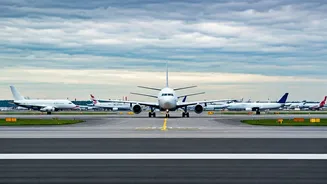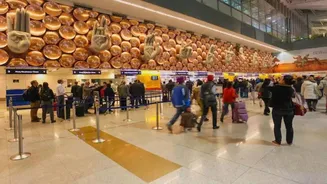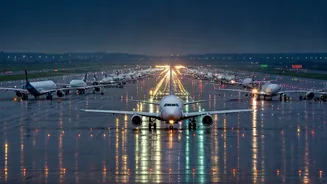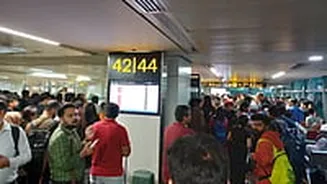AMSS Glitch Unveiled
The primary cause of the widespread delays at Delhi Airport was identified as a glitch within the Automatic Message Switching System (AMSS). This system
is a crucial part of air traffic control (ATC), tasked with managing the flow of flight-related messages. When AMSS fails, it can disrupt the communication and coordination necessary for safe and efficient air traffic management. The impact of such a failure is extensive, leading to cascading delays as the airport struggles to manage the influx and outflow of flights without the support of the system. The exact nature of the glitch and how it occurred remains a key area of investigation. It highlights the reliance on complex technology within the aviation sector and the vulnerabilities that can arise when these systems experience operational problems. Understanding the precise sequence of events leading up to the failure is critical for implementing preventative measures to avoid future incidents. The goal is to fortify the existing infrastructure to avoid disruption.
ATC Operations Breakdown
The ATC glitch crippled the functionality that air traffic controllers rely on to ensure the safety and precision of flight operations. Normally, the AMSS efficiently handles the exchange of crucial information, such as flight plans, weather updates, and aircraft positions, between pilots and air traffic controllers. When this system fails, air traffic controllers are left to coordinate flights manually or with limited resources, significantly diminishing their ability to manage a large number of aircraft safely. The ATC must then navigate through a manual process, where each piece of information must be relayed directly and more slowly. This manual process slows down the whole operation, making it hard to maintain safe distances between aircraft and causing the delays passengers witnessed. The severity of the disruption also underscores the importance of backup systems. The lack of readily available alternative systems to quickly restore normal operations compounded the situation. This prompted authorities to review the existing processes and the installation of additional safety mechanisms.
Flight Delay Impact
The AMSS glitch led to a significant ripple effect across the airport's operations, causing massive delays and disruptions to numerous flights. As the system failure limited the number of flights that could safely operate, many aircraft experienced extended ground times, and passengers encountered significant travel obstacles. These delays impacted both incoming and outgoing flights, thereby compounding the problem and causing flight schedules to be severely affected. Passengers, already frustrated by the delays, were further inconvenienced by the knock-on effects, such as missed connections and reduced accessibility to essential services. This disruption highlighted the vulnerability of the air travel infrastructure and the need for proactive measures to minimize the effects of system failures. As a consequence, airlines and airport authorities had to work together to mitigate the impact of the delays, ensuring passenger safety and providing assistance and updates.
Investigation Insights
Following the disruption, a full investigation was initiated to understand the root cause of the AMSS glitch. This investigation seeks to identify precisely what failed within the system and what factors may have contributed to the problem. Key areas of focus include the design of the system, its maintenance schedule, and any potential human error. The goal of this in-depth analysis is to reveal the weak spots and to create solutions to prevent future problems. The investigation will also evaluate the backup mechanisms and emergency response protocols that are put in place in such instances. Any updates will allow authorities to enhance the resilience of the airport's air traffic management capabilities. This includes looking for new technologies and creating an enhanced emergency plan. The information gathered during this investigation will be very important for improving the safety and efficiency of air travel at Delhi Airport and in the entire aviation industry.
















